
An electric boat on the Königssee
In my fifty years, I’ve been to twenty-one countries, and I’ve done my best to see the best they had to offer. Two weeks ago, I saw the best of the best: the Königssee and Obersee in Berchtesgaden National Park.
Formed by glaciers and fed by glaciers, the Königssee and adjacent Obersee lakes have the most unearthly blue-green color. Tiny mineral particles in the glacier meltwater are responsible for this. Too small to fall to the bottom of the lake, they stay suspended in the water and scatter the sunlight. I haven’t enhanced or altered the color of this photograph so you can see that strange green water for yourself.
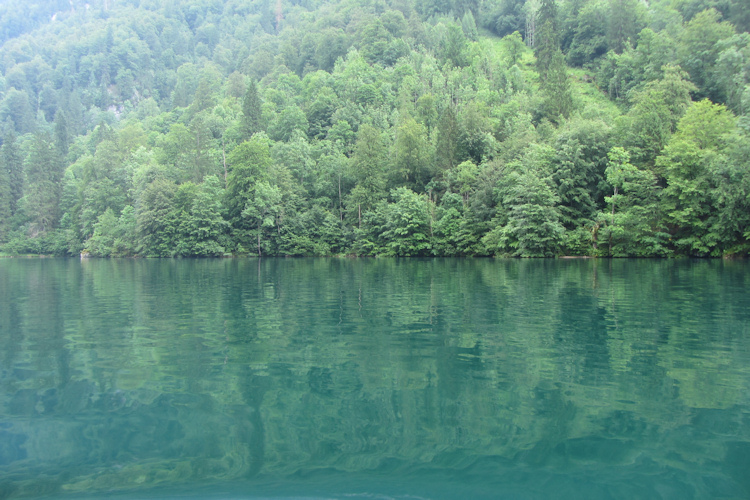
Blue-green water in the Königssee
I’m not the only one who considers the fjordlike Königssee lake to be special. In 1909, Prince Regent Luitpold ordered that no gas-fed or diesel-fed motors be allowed on the lake and designated the area around it to be protected land, along the lines of American national parks. Boating since then has been extremely limited, and electric-powered boats have plied its waters ever since. While the prince made this decision in order to limit noise, we now recognize how important it has been in limiting pollution: no oil-slick smooth trails cross the waters of this lake long after their boats have passed, as they have done in other bodies of water I’ve seen. In fact, the clean, quiet electric boats hardly raise a ripple.
Even the Nazis looked after this lake and confirmed its status as a protected wilderness. No waste products have been allowed to run off into the lake; they are scrupulously piped away from its pristine depths. The result is that the Königssee is the cleanest lake in Germany, reported to meet the standards of drinking water.
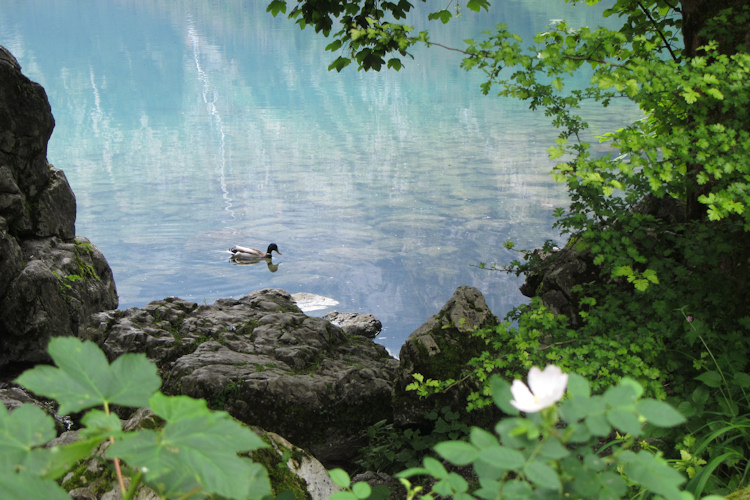
Duck in Berchtesgaden National Park
Of course, this little fellow doesn’t know anything about that, and neither do the numerous trout. So I declined to take a drink of the Königssee.
If you want to visit the Königssee, my advice is to stay nearby and arrive early. We stayed in nearby Ramsau at Alpenpension Auengrund, a 13-minute drive from the lake. It was a bargain, the breakfast was wonderful, the owners were delightful, and I hope to stay there again the next time I visit the area.
Boats start sailing the Königssee at eight in the morning this summer, according to the posted schedule. Compared to the lakeside wilderness, the most unattractive part of your day is likely to be the large parking lot in Schönau am Königssee, a five-minute walk from the boat dock. The earlier you get there, the emptier it will be and the less likely you’ll have to wait for a boat. You have to take a boat to see this beautiful place because the sheer cliffs surrounding much of the lake make it impossible simply to hike around it.
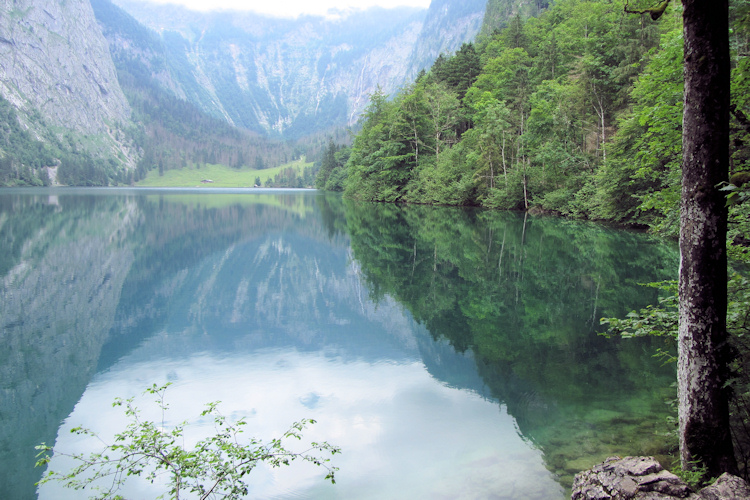
The Obersee
I also recommend not stopping at the first major stop, St. Bartholomä, but buying a ticket to go all the way to Salet at the opposite end. From there, you can walk to the Obersee, pictured above, and walk around to its far end. Not that many tourists were coming this way when we were there, so it was a very pleasant and quiet walk. It’s easy as hikes go, level for the most part except for an area where there are big stone steps along a cliff, but a strong cable acts as a handrail there. We weren’t sorry we had our hiking poles, but they weren’t necessary.
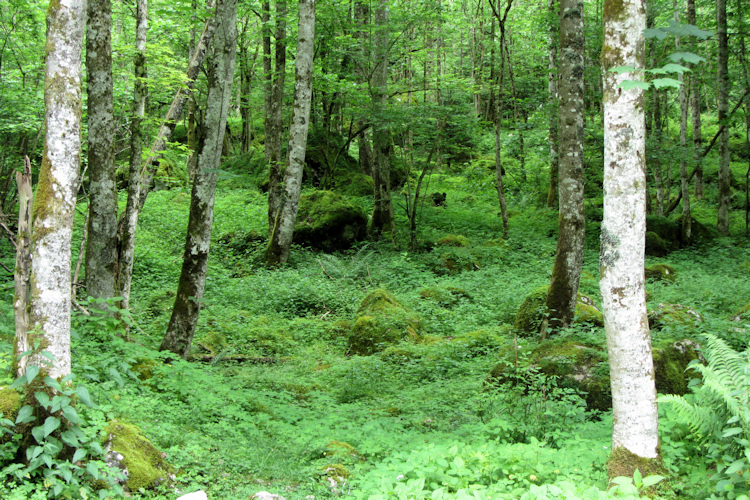
Forest by the Obersee
Thick green forest borders the Obersee, full of mossy rocks, and a cuckoo was calling steadily in the trees nearby. You can’t help counting upward as you listen to a cuckoo; from what I could tell, it ended up being about two hundred o’clock.
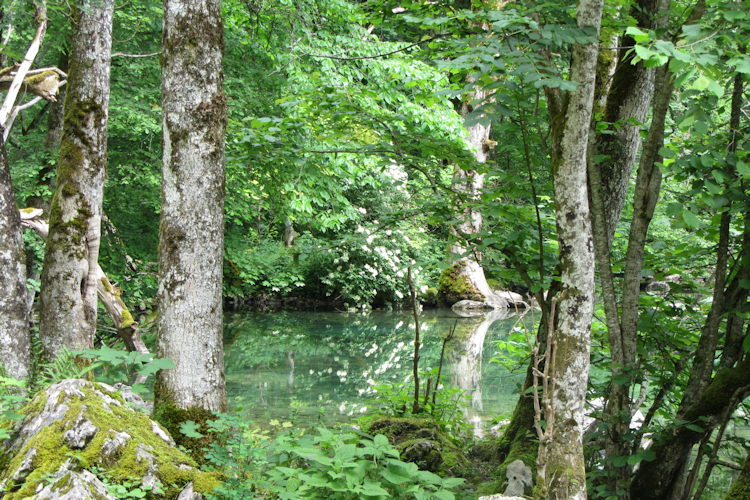
The Obersee
This is what I hope heaven looks like.
To read my latest blog posts, please click on the “Green and Pleasant Land” logo at the top of this page. All photos taken in May, 2014, in Nationalpark Berchtesgaden, Germany. Photos and text copyright 2014 by Clare B. Dunkle. Due to an incorrect setting, comments have been inadvertently turned off for this post, but will return on later posts.
